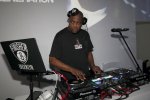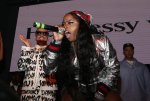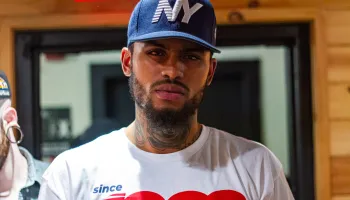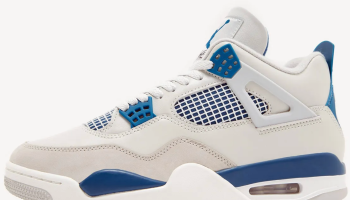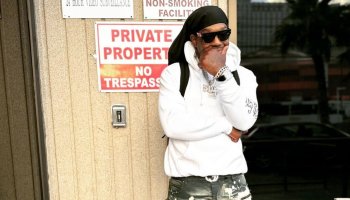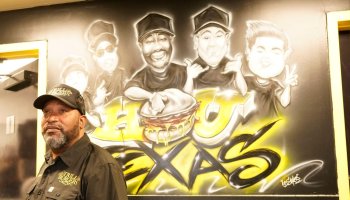Hip-Hop Wired delves into the mind of filmmaker Ava Duvernay, and Good Life M.C, Abstract Rude to explore the Good Life Era and its place and impact on Hip-Hop culture
Snoop kicked down skyscrapers in New York in the 90’s because he was tired of West Coast MC’s being viewed and defined through the condescending eyes of East Coast rap critics. The New York Elite held the reigns of Hip-Hop in a dead-man’s grip refusing to pass them to rappers that they deemed unsophisticated, lyrically challenged, and unworthy of respect. Like all oppressors, the East Coasters eventually lost their powerful hold on the empire that they founded. West Coast Gangsta’s like N.W.A, Ice-T, and D.J. Quik squeezed controversy by her throat and held her until she could look no other way, except Westward. The Gangsta era- ushered in by N.W.A exploded exponentially, even as New York desperately tried to get its mic-control back. It was too late though. Rap, as an empire was now ruled by the G’s; and the guns, money, and hoes that governed the kingdom cemented their role in this art-form and defined the Left Coast’s legacy to the music we call Hip-Hop. Or did it?
A ride in the DeLorean back to 1989 will take you to a place called the Good Life Café. It was in South Central Los Angles and should have been subject to the directive of the Gangsta Empire, but these young M.C.’S who called themselves Good Lifers claimed their own sovereignty and flew a flag of their own design. Their leader was not a rapper, nor was she even a peer. B-Hall, as they affectionately called her, was a nurturer, and like Neo’s Oracle the mother of a movement. It was in the Café where she and her son Arkane Blaze created a space comparable only to the “Basement” that East Coast Hip-Hop evolved in.
“This is the Life,” the recently released DVD documentary created and directed by former Good Lifer and Filmmaker Ava Duvernay, explores the movement and revises Hip-Hop history as it pertains to its expansion into the West Coast. Freestyle Fellowship, Abstract Rude, Chali2na, and Medusa are some of the sporadically diverse MC’s who not only share their memories of the Good Life, but through their testimonies, challenge the historical perspective that insists that the West was won through gangsta rap. This soon to be classic is a reminder that Hip-Hop was created from love and not another by-product of corporate greed and manipulation. Hip-Hop Wired delves into the mind of filmmaker Ava Duvernay, and Good Life M.C, Abstract Rude to explore the Good Life Era and its place and impact on Hip-Hop culture.
This is The Life Trailer
HipHopWired: What are your feelings in regards to the popular belief that gangsta rap is West Coast’s only contribution to Hip-Hop?
Ava Duvernay: The gangsta rap was the minority at that time on the streets. I mean on the radio and on MTV and BET- they would have you think that everybody out here was all rapping about banging, but that wasn’t what was really going on… It wasn’t like every street corner was gangsta rap- that’s the myth and that is what we hope our film shows-that there was a vibrant huge scene of music that sounded completely different from anything that you were hearing on the radio. So that’s a big mis-representation of LA, I think.
Abstract Rude: Gangsta rap is the definitive contribution that the West Coast made to Hip-Hop. We can’t forget that. My influences… if you go far back are like Curtis Blow, Kool Moe Dee and of course all the Def jam stuff; but just as much it was N.W.A, Ice-T, King T, Low Profile, Compton’s Most Wanted… It’s just as much those guys…I think any West Coast M.C. will tell you that- especially in L.A. or Southern Cali.
HipHopWired: The Good Life movement definitely had an impact on popular culture. Sitcoms like “Moesha” and the short-lived sitcom/drama “South Central” aired episodes that featured places that appeared to be modeled directly after the Good Life Café. How did the Good Life movement get adopted into these shows?
Abstract Rude: They used a couple of people from the Good Life in the shows as extras. What people didn’t know was that Bus Driver’s [Good Life MC] dad was Ralph Farquhar, who was the guy who wrote “Krush Groove” and he was actually the executive producer [and creator] of Moesha. Bus Driver would bring his dad up to the Good Life with him. He was young coming up to the Good Life like me. So his dad was bringing him up there and… matter of fact he kinda stepped to us at one point. This was before the whole “Real World”… His dad came at us proposing that we do sort of like a “Real World” of the Good Lifers. I remember at the time I was young and still staying with my moms. So I remember I was just quiet because I didn’t see how I could be apart of it anyway, but I remember thinking some of these cats got warrants and some of these cats doing things on the streets… I remember just thinking, “How can that work? We hadn’t seen the reality TV format yet but he had the idea way back then. And so, I don’t think the collective reaction was [positive]… and we let that chance pass us by, so we couldn’t be mad when it showed up on Moesha. Of course he (Ralph Farquhar) was going to do something. His son goes to the place. You know it was a community place so he added it to the show because that’s what his real life experience was- taking his son to this place. So it wasn’t like Hollywood came in and exploited the place.
HipHopWired: Did you really see Shannon Doherty [90210] out at the Good Life?
Ava Duvernay: Oh yeah, I saw her. We even hung out and got a burger afterwards. She was very nice.
HipHopWired: How did she hear about the Good Life?
Ava Duvernay: Somebody had brought her- some dude she was with … For some reason my memory is telling me he might have been like a music guy -like a record company guy because there were a lot of A&R’s scouting around back then. I mean she wasn’t just there cause like-,“Oohh! I want to hear the Good Life music.” She was there with somebody. She was real cool. (Laughing) I don’t think she really knew where she was or what was going on, but she was up in there.
HipHopWired: The Good Lifers were pretty vocal in regards to their feelings about… let’s just say style borrowers. How do you feel about those who borrowed from the Good Lifers.
Ava Duvernay: (Laughs) Style Borrowers. Okay, that’s the new name for biters! (Serious) I think its fine to borrow, but when you borrow, you acknowledge where you got it from. I think that’s a lot of what people that were involved with the Good Life were a little salty about for a long time. Taking an idea and running with it and never giving any respect or any acknowledgement to where the styles were born and I think that’s kind of a different movement then saying- “You know what? I was influenced by this cat and you know I’m building on it.” That would have been one thing, but a lot of what happened was just people passing off innovation as if they had done it themselves. But you know, in hindsight everyone involved in the Good Life is in a good place and folks are over it, making their own music, and you know have grown passed it. But yeah, at one time it was a big deal.
HipHopWired: Looking back, do you feel like you and the Good Lifers made your music and movement too accessible to the public?
Ava Duvernay: No I don’t think it was too accessible because that’s what art is. Art is too be bared and art is made to move people in one direction or another I think. That’s what I believe art is and the best art can’t be an interior thing. It can be an interior process, but it has to be presented at some point and what happens from there is beyond your control. I mean a filmmaker makes a film, puts it out there [and] everyone can hate it, but it’s not a film if it stays in the drawer and that’s the same with a rhyme or with a song, ya know what I mean? I don’t know if it’s art if it stays in your head. The whole thing that an artists does is interpret what they feel for the world so I think it was the right thing to do to present it to people and to perform it to people and be really vivid… That’s something that I think a lot of artists involved with Good Life had to come to terms with. Yeah we would have liked people to be more righteous with it, but it didn’t happen and so you know, we move on.
Inside Look At The Good Life
HipHopWired: What if there had never been a Good Life in South Central Los Angeles?
Abstract Rude: If there were no good life there would probably not have been a Freestyle Fellowship. It wouldn’t have been the four people that we came to know- definitely not. Also it’s safe to say that the Pharcyde [seminal West Coast rap group] record would have been a lot different [without the Freestyle Fellowship influence]. No Good Life- you’re affecting essentially a 20 year run of positive youth outreach in Los Angeles in the hood, in South Central mind you.
Ava Duvernay: L.A. would be very different. The Good Life was kind of like a healing… you had to remember in 1992 the whole city was on fire with rebellion after the Rodney King verdict… There were ghetto birds (police helicopters and Darryl Gates [L.A. Police Chief] and you could hear it in the music and it was very tense and something was about to happen. In ‘92,’93,’94, the Good Life really became a place where if you sat there any Thursday night and you really listened to what was being said it was really like a novel telling what young people were thinking about during that time and if they didn’t have that creative outlet I wonder what would have happened.
*Abstract Rude’s latest release Rejuvenation is also in stores.*
Abstract Rude Speaking on This is The Life DVD
Good Life Cafe Tribute
